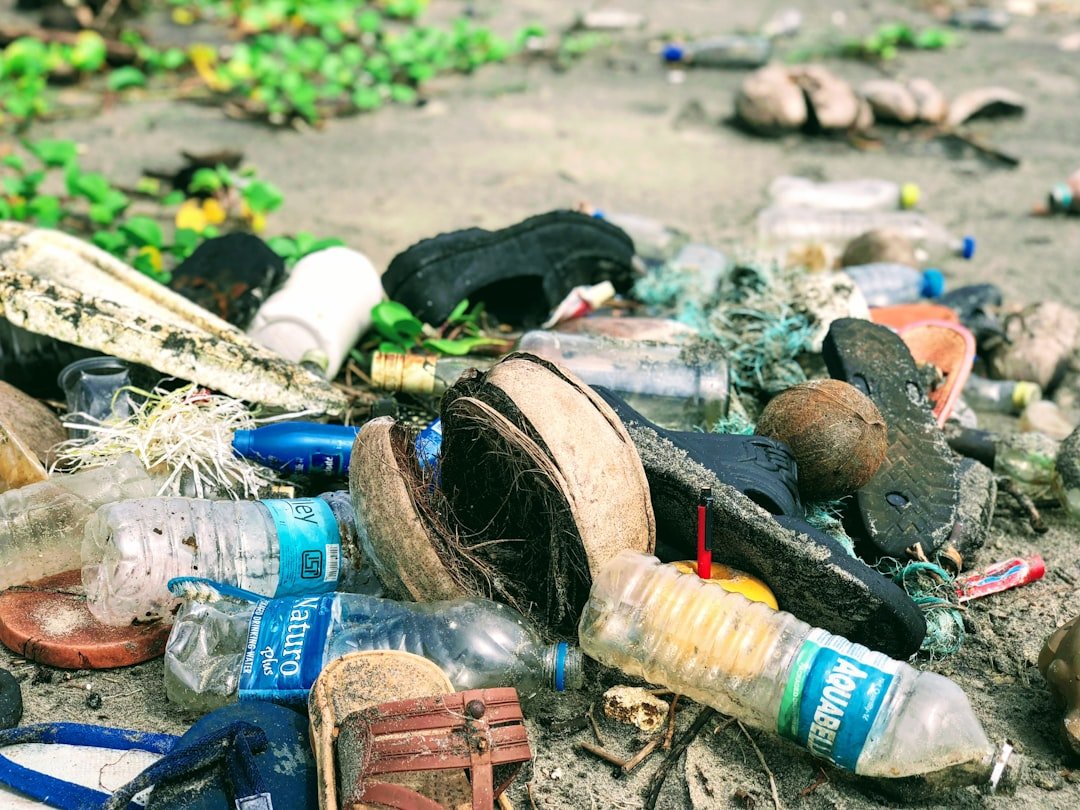Sea turtles are negatively impacted by plastic pollution, which has become one of the 21st century’s most urgent environmental problems. The abundance of plastic debris in their environments is posing previously unheard-of risks to these old animals, which have been swimming in the oceans for more than 100 million years. Sea turtles frequently confuse plastic waste for food, which can result in ingestion that can kill them or seriously harm their health. These delicate species are seriously threatened by the enormous amount of plastic in the oceans, which is thought to be in the millions of tons.
Key Takeaways
- Plastic pollution has a significant impact on sea turtles, leading to habitat destruction, ingestion dangers, and reproductive issues.
- Plastic plays a major role in the destruction of sea turtle habitats, such as nesting beaches and feeding grounds, due to its persistence and ability to entangle and suffocate turtles.
- Ingesting plastic poses serious dangers to sea turtles, causing internal injuries, blockages, and even death, as they often mistake plastic for food.
- Plastic pollution affects sea turtle reproduction by disrupting nesting sites, reducing hatching success, and impacting the gender ratio of hatchlings.
- Solutions for reducing plastic threats to sea turtles include implementing bans on single-use plastics, promoting recycling and waste management, and supporting beach cleanups and conservation efforts.
Also, the effects of plastic pollution go beyond consumption. Entanglement in plastic debris, including fishing nets and six-pack rings, has an impact on sea turtles as well. Turtles may sustain injuries, drown, or have reduced mobility as a result of this entanglement, which makes it more difficult for them to feed, swim, or avoid predators. Several sea turtle populations have declined globally as a result of these factors combined, underscoring the pressing need to address plastic pollution in marine environments.
Sea turtle habitat destruction is yet another serious effect of plastic pollution. Sea turtle nesting grounds along the coast are frequently covered in plastic debris, which can interfere with nesting habits & lower the likelihood of a successful hatch. When plastic debris is present, it can change the environmental cues that female sea turtles use to find appropriate nesting sites, causing them to choose inappropriate areas.
Individual turtles are not the only ones impacted by this disturbance; entire populations may be affected in the long run. Also, the degraded marine ecosystems that are essential to sea turtles’ survival are a result of plastic pollution. Plastic waste is posing an increasing threat to coral reefs, seagrass beds, and other vital habitats. These ecosystems can become choked with plastic waste, making it more difficult for sea turtles to find food and shelter.
| Year | Number of Sea Turtles Saved | Amount of Plastic Removed |
|---|---|---|
| 2018 | 500 | 1000 lbs |
| 2019 | 750 | 1500 lbs |
| 2020 | 1000 | 2000 lbs |
Sea turtles’ struggles in their natural habitats are made worse by the general deterioration of marine biodiversity, which also affects these habitats. Sea turtles that consume plastic run a serious risk of developing a number of health issues that could eventually lead to their demise. Consuming plastic products like bags, bottles, or microplastics can cause gastrointestinal blockages in sea turtles, which hinders their ability to properly digest food.
Due to their inability to absorb vital nutrients from their natural diet, the turtles may suffer from malnutrition and starvation as a result of this obstruction. Also, a turtle’s body may absorb harmful substances if it consumes plastic. The toxic chemicals found in many plastics can seep into the tissues of marine life and cause long-term health problems like immune system dysfunction and reproductive disorders. Because sea turtles play a crucial role in their ecosystems, the buildup of these toxins may have a domino effect on the aquatic food chain. Given the risks of consuming plastic, comprehensive measures to reduce plastic pollution in marine environments are desperately needed.
Sea turtles are not only at risk from individual plastic pollution, but their ability to reproduce is also seriously jeopardized. According to research, marine animals’ hormone systems can be upset by exposure to microplastics & other pollutants, which can change their reproductive habits & lower their fertility rates. This disturbance may cause female sea turtles to lay fewer eggs or have a lower hatching success rate, which would ultimately affect population dynamics. Also, the presence of plastic waste on beaches where sea turtles nest may discourage females from laying eggs at all. Females may decide to leave nesting sites in quest of cleaner alternatives if they are significantly contaminated with plastic waste.
This behavior can further jeopardize the survival of sea turtle populations that are already at risk by reducing hatchling numbers and nesting success. The effects of plastic pollution on reproduction highlight the relationship between species survival and environmental health. Governments, corporations, & individuals must all be involved in a multifaceted strategy to address the problem of plastic pollution. Stricter laws governing the manufacture of plastics and waste disposal are one practical remedy. Governments can implement laws that encourage the development of biodegradable substitutes, decrease the use of single-use plastics, and encourage recycling.
The quantity of plastic that enters marine environments can be greatly decreased by establishing a regulatory framework that places a high priority on sustainability. Public awareness campaigns, in addition to regulatory actions, are essential in the fight against plastic pollution. People can be motivated to adopt more sustainable lifestyle choices by educating communities about the harm that plastic waste causes to marine life. Programs like community recycling initiatives and beach clean-ups can encourage people to take action and help save sea turtles and their habitats. A culture of environmental stewardship can help society as a whole lessen the threats that plastic poses to these amazing animals.
One of the most important strategies in the fight against plastic pollution and its effects on sea turtles is beach cleanups. The significance of preserving clean coastal environments is brought to light by these concerted efforts, which also clear debris from nesting locations. Sea turtle nesting sites & their offspring are made safer when volunteers band together to clean beaches. Cleanups of beaches also offer a chance for education and community involvement. Participants are frequently taught about the kinds of trash that are frequently discovered on beaches & how they can endanger marine life.
With this information, people may make more conscientious purchases & be motivated to support laws that deal with plastic pollution more broadly. Beach cleanups greatly aid in the conservation of sea turtles by encouraging a sense of collective responsibility for coastal ecosystems. Laws are essential for shielding sea turtles from the dangers that plastic pollution poses. Globally, governments are enacting legislation to reduce plastic waste and protect marine ecosystems as they start to realize how urgent this problem is.
A lot of nations, for example, have enacted laws prohibiting single-use plastics or established aggressive goals to cut down on plastic usage. International agreements are crucial in combating plastic pollution globally, in addition to national policies. The necessity of cooperative efforts to preserve marine biodiversity, including vulnerable species like sea turtles, is emphasized by treaties like the United Nations Convention on Biological Diversity. The future of human communities and marine life can be made more sustainable through legislation that promotes global cooperation and a dedication to minimizing plastic waste.
Although systemic changes are necessary to combat plastic pollution, sea turtles can be protected from this threat in large part through individual actions. Advocating for sustainable practices, reducing the use of single-use plastics, and taking part in neighborhood cleanups are all small lifestyle adjustments that can have a big impact. The demand for disposable plastics that frequently wind up in the ocean can be reduced by people using reusable containers, bottles, and bags.
Also, people can volunteer or make donations to organizations that support the conservation of sea turtles. Numerous nonprofit organizations concentrate on advocacy, rehabilitation, & research initiatives to shield these amazing animals from dangers like plastic pollution.
Ultimately, tackling the effects of plastic pollution on sea turtles necessitates an all-encompassing strategy that incorporates individual accountability, community involvement, and legislative action. Society can guarantee a better future for these ancient mariners & their delicate ecosystems by recognizing the complex problems caused by plastic waste and actively working toward solutions.
Check out this article on rising seas, air pollution, deforestation, and other current environmental challenges that are impacting the world’s ecosystems. This article discusses the various threats facing our planet, including the plastic pollution that is harming sea turtles and other marine life. It highlights the urgent need for action to address these issues and protect our environment for future generations.



